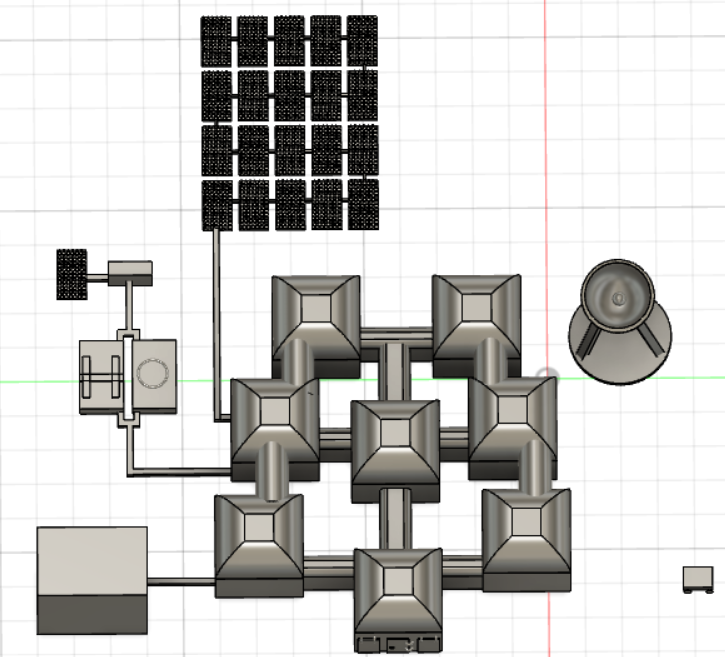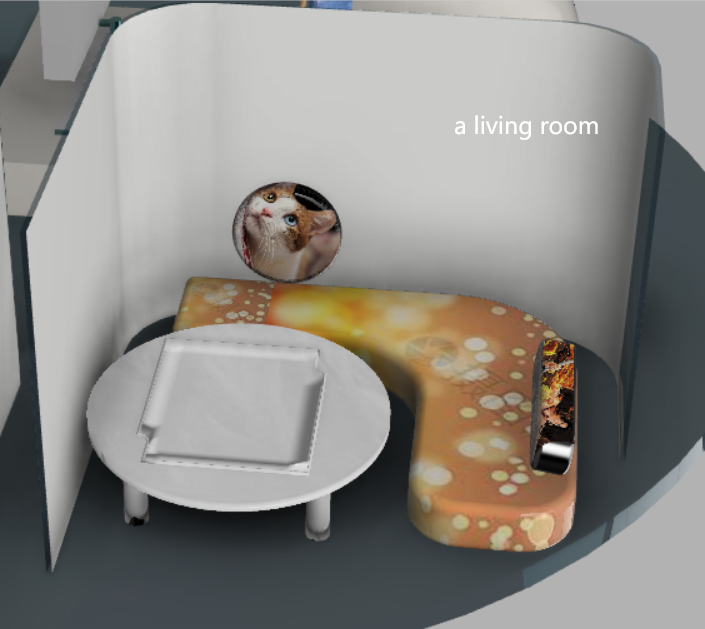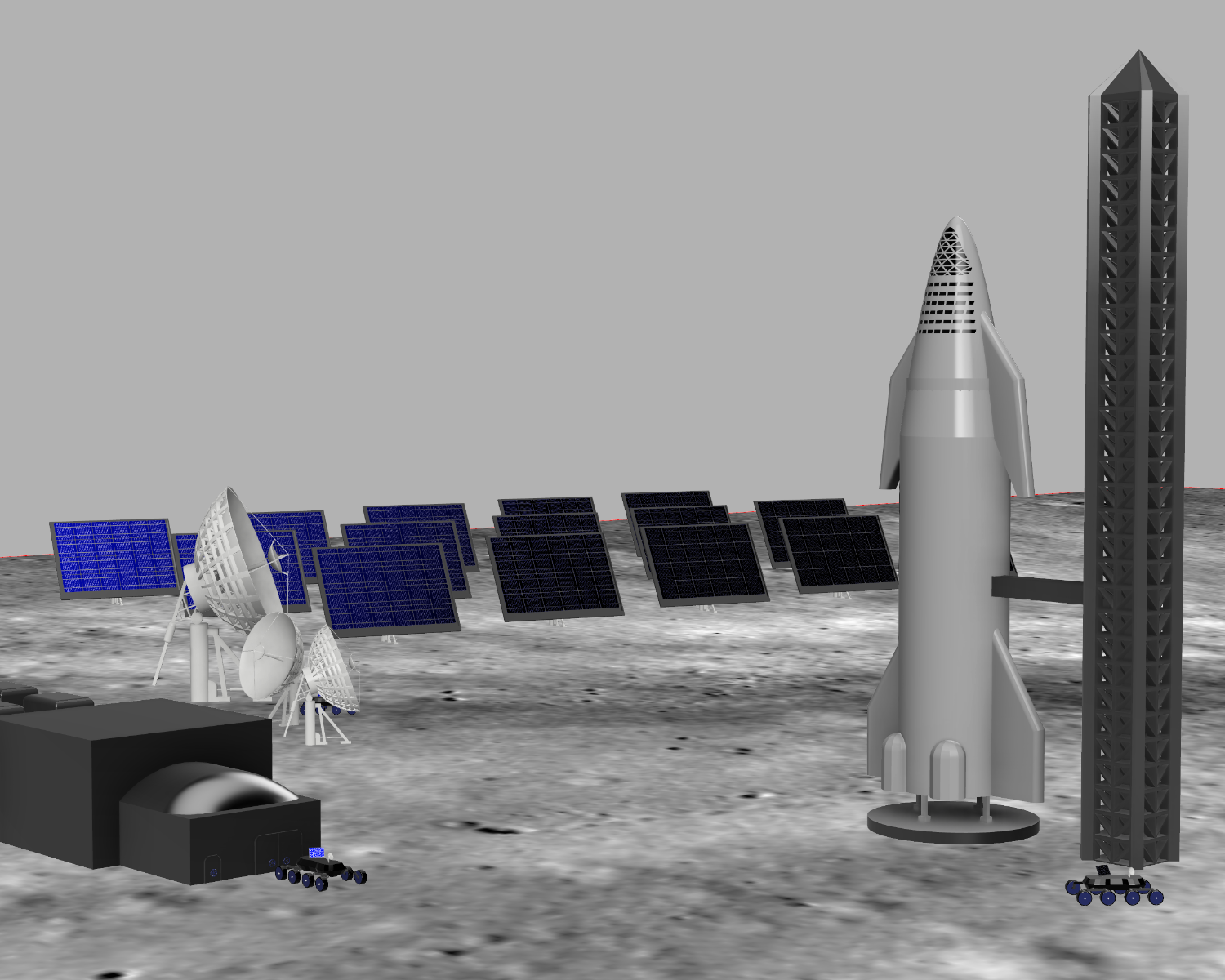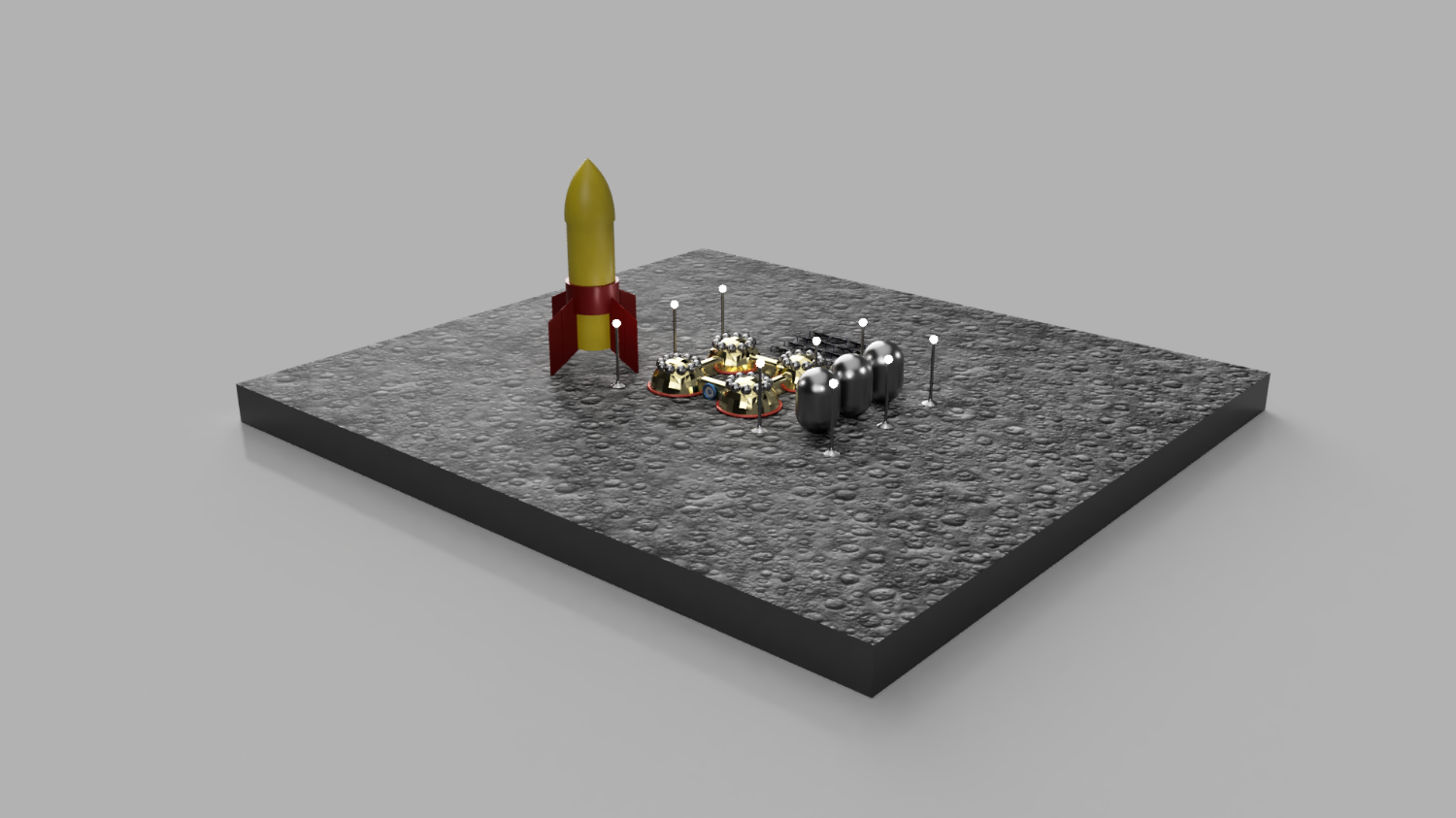Moon Camp Pioneers Gallery 2021-2022
In Moon Camp Pioneers each team’s mission is to 3D design a complete Moon Camp using Fusion 360. They also have to explain how they will use local resources, protect astronauts from the dangerous of space and describe the living and working facilities.
Team: DMH
Mathemathic high school Dr. Petar Beron Varna Bulgaria 17 3 / 2
External viewer for 3d project
|
Project description
The aim of our project is to examine the behavior and physical development of different species in different from Earth’s environment. Mainly we want to determine the change of their lives in a controlled moon environment.
The MoonCamp consist of a laboratory, living zone, communication room, are with power supplying batteries and outside farms. The laboratory is part of the ssmi-underground modul. Being digged into the ground provides protection from meteorites and radiation. The lab divides into а research center, habitats adapted for terrestrial and aquatic life and two compact stations.
The living module is above ground. The following parts are distinguished in it: Living part – bedrooms Training part – includes training equipment attached to the ground and with a belt to keep astronauts from floating around, a place for free exercise practice and bathrooms. Communication room – the main connection to the Earth and a router giving astronauts access to network coverage in the base. Water storage and food supplies – there is the refrigerator warehouse for storaging water and food Office part
People will move around the building through hatches and levers, similar to the NSS. Gravity will not be simulated. |
|||
|
2.1 Where do you want to build your Moon Camp?
The Amundsen crater provides Permanently Shadowed Regions and sunlit areas. Its flat surface is suitable for deployment of superconducting cable which can provide electricity. The PSR include areas with extremely low temperature and excessive quantity of hydrogen.
The materials in the crater are potential resource for future economical development on the moon. The presented information is a research, conducted by Thomas Marshall Eubanks. Amundsen is located near the moon’s south pole which ensure wide resource of glacier in the area. 2.2 How do you plan to build your Moon Camp? Describe the techniques, materials and your design choices.
The building of the station is split into 4 stages. The first step consists of digging space needed for the laboratory module. The cast is moulded out of steel. After that the observation departments, animal habitats and emergency sites are constructed.
The parallel construction of the two towers built by duraluminium is the second stage. It is likely to be the longest due to the installation of communication devices, air purification and water waste processing system.
The third stage consists of transferring additional and more voluminous equipment such as emergency shutters, natural habitat scenery, nuclear reactors and solar panels.
At the last stage, which can be divided into two missions to the moon, scientists are brought to inhabit the camp and animals on which it will be experimented.
At the top of our base will be the communications room made of duralumin and closed with polycarbonate. The space there will be occupied with massive computers and routers to establish the connection to Earth and create a network range zone.
The connection between the station and the lunar surface will be provided by a retractable ramp that can be used by astronauts and vehicles. We will separately have a lift at the two entrances of the residential area that will pull up the astronauts into a depressurizer.
2.3 The environment on the Moon is very dangerous for the astronauts. Explain how your Moon Camp will protect them. (maximum 150 words)
The astronauts will spend their time mostly inside the main building. The materials which is built of are sufficient protection. The external buildings are related to the main one by means of tunnels, which suggests that the astronauts will once again rely on the construction of the base.
Exiting the base will be imposed in case of malfunctioning of a part of the base, for instance a nuclear reactor. It will be shut out from power and fixed manually. Astronauts will be equipped with a spacesuit that protects against lunar dust and radiation for enough time. |
|||
|
2.4 Explain how your Moon Camp will provide the astronauts with:
|
Water
|
Food
|
Power
|
Air
|
|
Initially it will be relied on supplies from the Earth. Subsequently, drinkable water will be extracted from the glaciers located in the camp area. This will be the main source of water. As a secondary source, the water processing system in the residential area will be used. This will cover the human necessities for water and will satisfy the animal needs. |
At first food will be delivered from the Earth. Astronauts will eat cosmonaut foods, similar to the NSS. It’s possible the first six months to go like so. Subsequently, the output of the external farms and the observed animals will be emphasized. |
Modern science provides a safe alternative to nuclear reactors – small modular reactors that will be a major source of energy. The advantage of small modular reactors is that they are much more profitable and comfortable in terms of size compared to traditional nuclear reactors. Their building requires less resources and less construction time. Unlike the traditional nuclear reactors that need to be built at the certain place, small modular reactors can be assembled in factories. For storing electric energy we will use nickel – cadmium batteries. The advantage of these accumulators is that they are easy to produce and relatively cheap to other rechargeable batteries. Nickel – cadmium accumulators are durable and have high tolerance to large temperature amplitude and therefore their property is attached to the Arctic expeditions. |
The main source of oxygen will be water extracted from the glaciers near Amundsen Crater. Through water electrolysis we will extract oxygen which will enrich the air in the station. We will store the air in special containers that will compress it to make it as compact as possible and transfer it into small capsules that will be plugged into the ventilation system of the base. The ventilation will be divided into sectors and each sector will have a separate ventilation system and oxygen dispersal system. Each sector will be continuously charged with oxygen but the ration will be determined based on the usage of the sector. The purpose of the separation into sectors and small cuts of oxygen capsules is in order to reduce unnecessary consumption of resources. |
|
2.5 Explain what would be the main purpose of your Moon Camp.
The main purpose of our lunar camp is mainly scientific. The study of changeable behavior and physical development of animals inhabiting different environments is a priority of our lunar base. The idea is to observe the long-standing exposure to controlled lunar conditions of organisms tailored to the earth. Experiments will be carried out in order to study their conscious and physical reactions that affect generations ahead.
Our base’s subpurpose is the tourist exposure of the base. In the future, it can function as a zoo for moon tourists. Our prediction is that animals in the lunar base are likely to manifest different qualities and even external feature from those on earth. This can serve as an attraction for commercial purposes, but this will be possible at a later stage.
|
|||
|
3.1 Describe a day on the Moon for your Moon Camp astronaut crew.
The day for the astronauts begins at six in the morning. After gathering, they do a blood test and a physical condition inspect. Once it is concluded that everything is fine, the astronauts follow a schedule. They are required to execute stretching exercises and light weight lifting. This is obligatory to maintain the weight and strength of the human body.
It follows verification of life-sustaining and communication systems. The next hour, from 7 to 8, a brief conference on the exchange of information and discussion of the activities of the day is held. Their morning is complemented by breakfast, rich in protein and carbohydrates.
The work stats at nine. The behavior of the animals, their natural processes and development are observed. Conditions in terrariums and aquariums are strictly monitored and, if necessary, adjusted. Reports are prepared for each day to have a written and digital trace of progress in the camp. The production of the farms placed in some of the habitats and outside is collected. The working day ends at five in the afternoon.
By the end of the day, astronauts focus on teambuilding and personal endeavors. At their disposal are the manual hall and the training room. Each of the astronauts can enjoy their own discretion.
At seven in the evening everyone is expected for a joint dinner. It aims to bring together the team. After it, the astronauts carry out the last basis for the day base. According to the program they have to go to sleep at ten p.m. |
|||
















